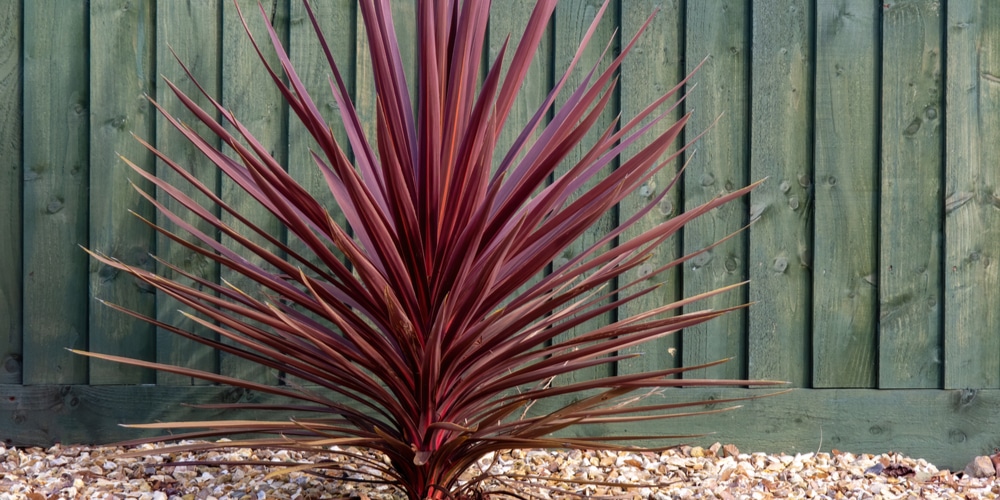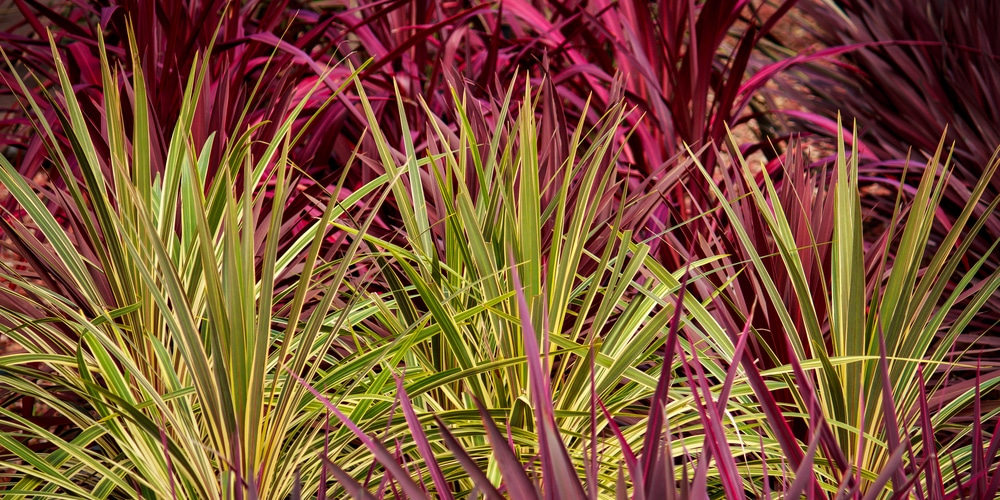If you’re looking for an easy-care, evergreen perennial to add some color and texture to your home or garden, look no further than the rooster tail. Cordylines are versatile plants that can be used as a groundcover, accent, or container plants. They are commonly grown as house plants but can be added to landscaping projects or hanging baskets in the right climate.
In this guide, we’ll tell you everything you need to know about growing and caring for rooster tails. Keep reading to learn more!
What is a Rooster Tail Plant?
Cordyline plants are also known as rooster tails, Hawaiian ti plant, or good luck plants. They are perennials that can be grown as house plants and do well outside in USDA plant hardiness zones 9 to 12.
They are tropical-looking plants with long spiky leaves that feel slightly leathery to the touch. The long sword-shaped leaves resemble roosters’ tails. These plants have the botanical name Cordyline terminalis and are part of the Asparagaceae family.
There are many varieties of cordylines available, and they can grow up to a height of four foot. Some prefer full sun, while others need partial shade. They come in a variety of colors, including purple, red, and green. You can even find them with variegated leaves that will stand out from the usual green plants in your garden.
Rooster Tail (Cordyline) Growth and Care
Here are some tips to help you grow a thriving rooster tail plant.
Sunlight
Cordyline needs to get at least 6 hours of direct sunlight per day. In hotter climates, they can be grown in containers or shady areas of the yard where they will get morning sun and be protected from the harsh afternoon rays.
Soil
Cordylines prefer slightly acidic soil (pH 5.0-6.5), but they do tolerate neutral soils up to a pH of 7.0. They are not particular about the type of soil they grow in, so long as it drains well and has some organic matter. If you have poorly draining or clay soils, adding sand or perlite to the mix will help with drainage.
Fertilizer
Rooster tails require feeding only once every three months or so. Use a balanced fertilizer for best results.
Rooster Tail (Cordyline) Growth and Care: Water
Cordyline is drought tolerant and does not require regular watering, but it should never be allowed to completely dry out. If your plant is in a container, make sure the pot has drainage holes and water when the top inch of soil feels dry.
Rooster Tail (Cordyline) Growth and Care: Temperature
Cordylines are tropical plants that like temperatures to be over 60 degrees Fahrenheit. These plants also need fairly high humidity levels, which can be achieved using a water and pebble tray if you don’t live in a humid environment.
Roster tails aren’t very cold tolerant and will die back to the ground in freezing weather. They make a colorful addition to landscaping projects or as houseplants in climates without harsh winters.
Rooster Tail (Cordyline) Growth and Care: Pruning
Rooster tails do not require much pruning, but you may want to trim off some of the flowers before they go to seed if you’re trying to limit the spread of the plant.
Conclusion
Rooster tails are a popular houseplant, easy to grow and maintain with little effort on the gardener’s part. You’ll also be able to find rooster tails for sale from plant nurseries, garden centers, and online. Many nurseries carry a variety of colors and varieties to choose from.
You may also be interested in: A guide to succulents with red flowers

